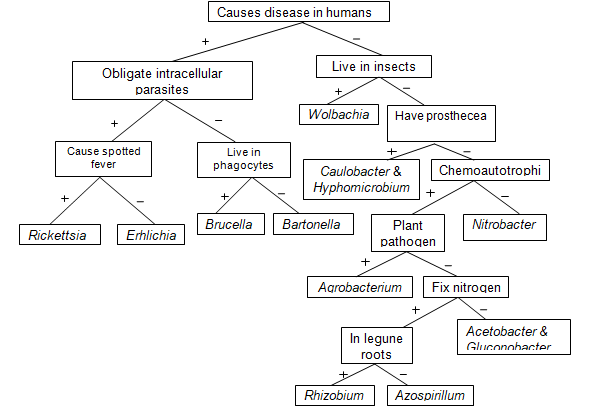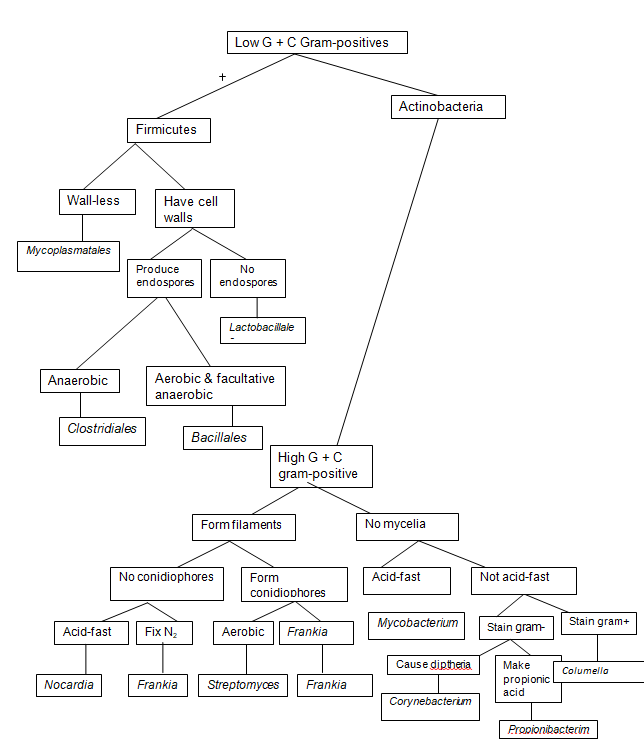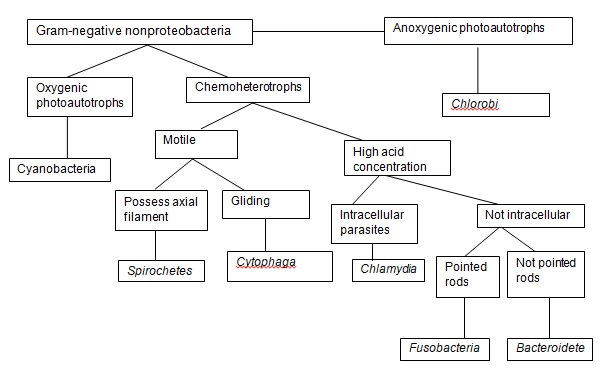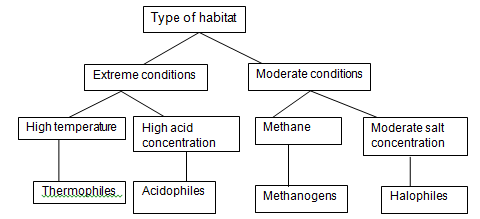The phylum Proteobacteria comprises mainly of pathogenic Gram-negative bacteria. This phylum consists of bacteria that are morphologically diversified like the Greek, Proteus, which it is named after. Most members of this phylum which are pathogenic to humans are obligate pathogens that are mostly intracellular. Such bacteria belong to the order Rickettsiales even though the genus Wolbachia usually exists as symbionts of insects. Other orders of economic importance in this phylum include Rhizobiales which have genera that are pathogenic to both plants and animals with others are responsible for nitrogen fixation. Notably, the genus Rhodospirillum of the order Rhodospirillales is photosynthetic (Tortora, Funk, & Case, 2010).

The following is a dichotomous key that distinguishes the five classes of the Gram-negative Proteobacteria.

Gram-negative are so classified due to their inability to stain or retain the violet during the Gram stain. This is attributed to the presence of lipopolysaccharide (LPS) in their cell walls, unlike their Gram-positive counterparts which have peptidoglycan. This endotoxin is what makes these bacteria pathogenic especially in humans as the LPS triggers various immune responses (Alcamo, 2001). They are divided depending on the mode of respiration, fermentation rate, temperatures in which they thrive and shape. They can be dichotomously divided as follows.

The remaining bacterial phyla, Planctomycetes, Chlamydiae, Spirochaetes, Bacteroidetes, and Fusobacteria, Thermophiles, Halophiles, Acidophiles, and Methanogens are classified based on their mode of photosynthesis, the position of the filament, motility and shape. They are also classified by their mode of movement and their habitat. While others like Cyanobacteria use oxygen photoautotrophs, others like Cytophaga are chemoautotrophs. Moreover, some of these bacteria are non-motile such as Chlamydia. Others like Spirochetes are motile and use an axial filament for movement. Some of these bacteria either inhabit acidic (Acidophiles), or areas with high temperatures (Thermophiles) (Krieg, Brenner, & Staley, (2005).

Dichotomous key for Thermophiles, Halophiles, Acidophiles, and Methanogens

References
Alcamo, I. (2001). Fundamentals of microbiology. Boston: Jones and Bartlett. Print.
Brenner, D., Krieg, N., & Staley, J. (2005). Bergey’s manual of systematic bacteriology: The proteobacteria. New York: Springer. Print.
Tortora, G., Funk, B. & Case, C. (2010). Microbiology: An Introduction (10th ed). New York: Benjamin Cummings. Print.